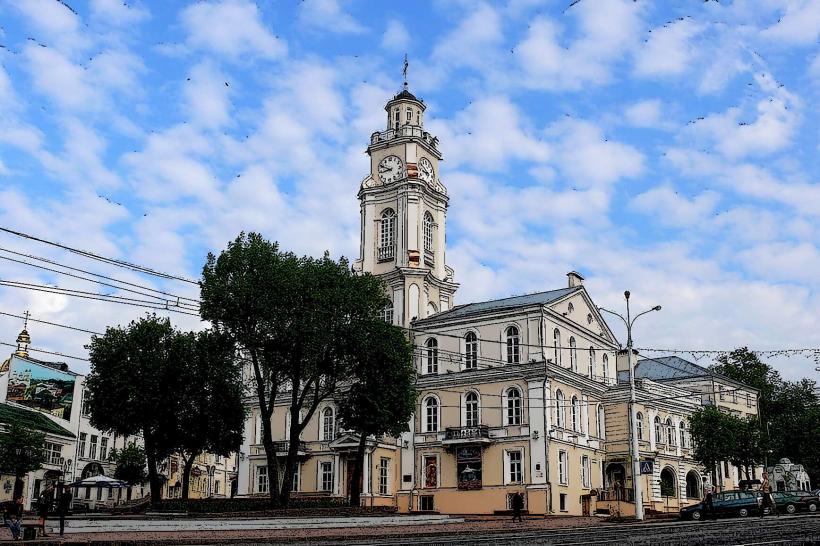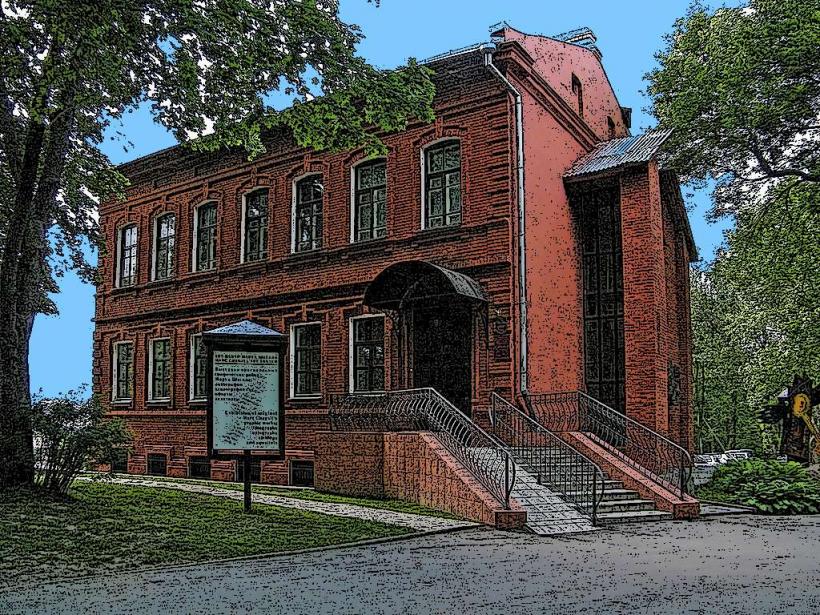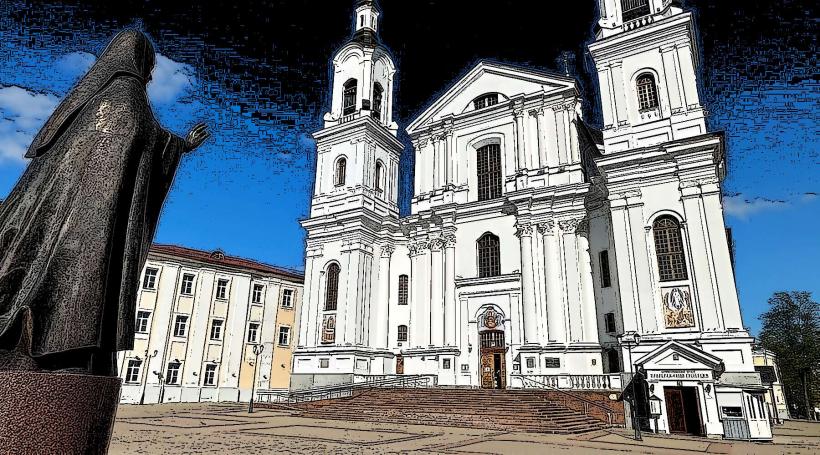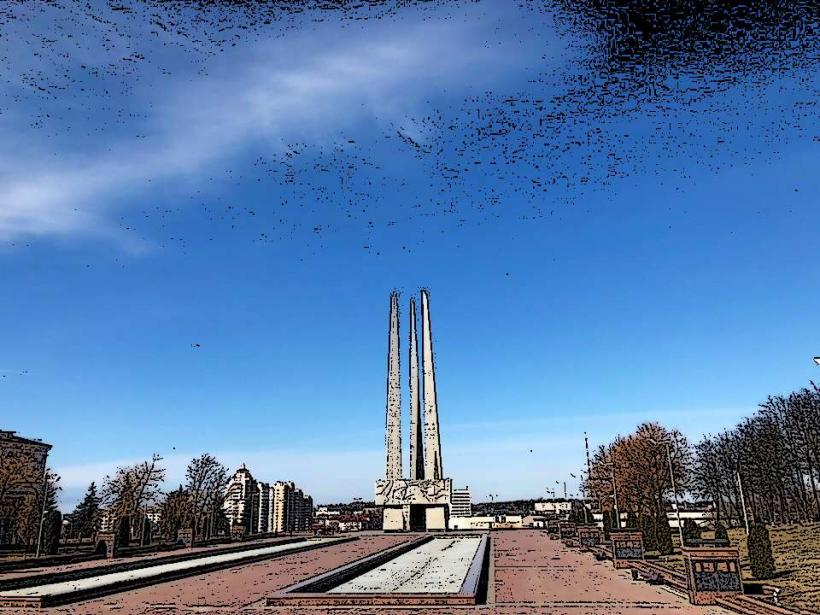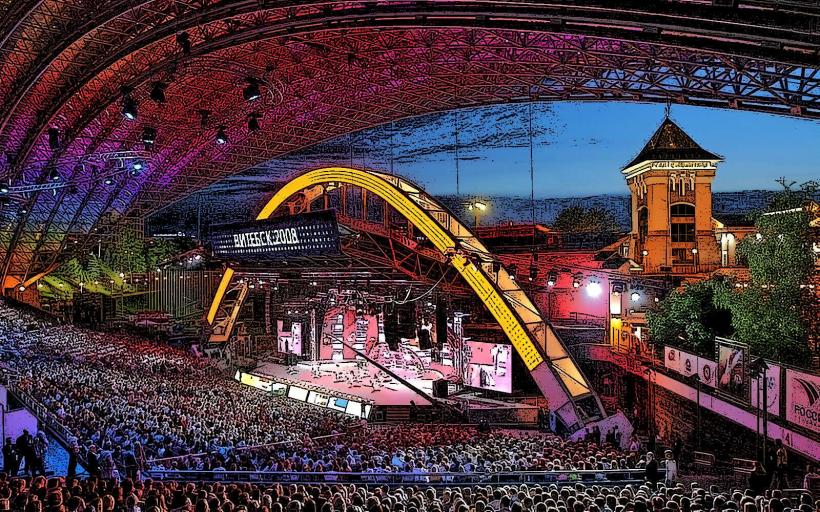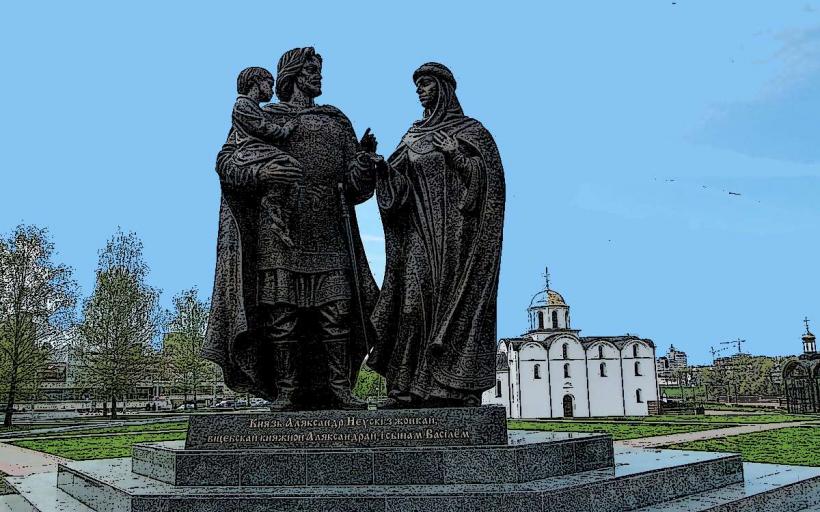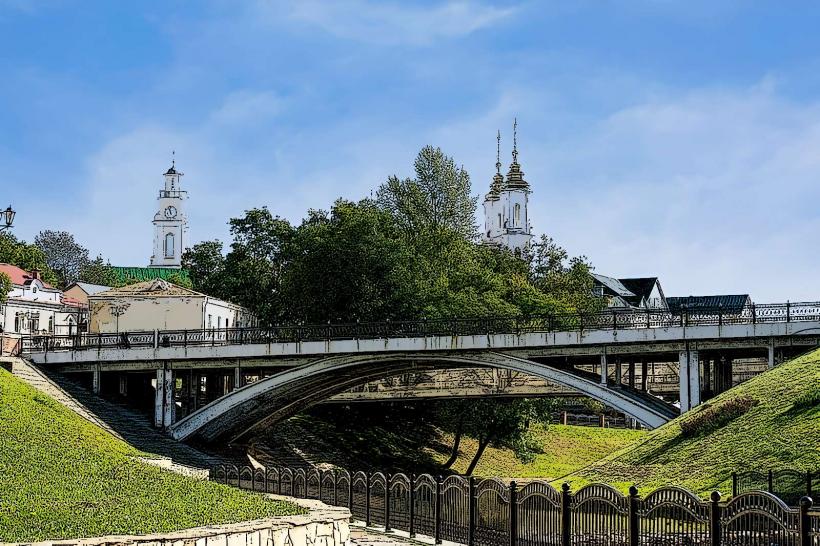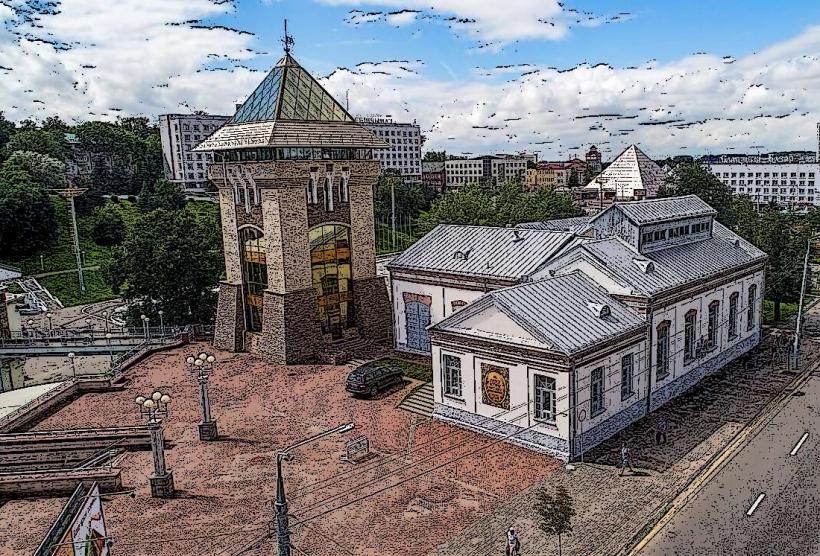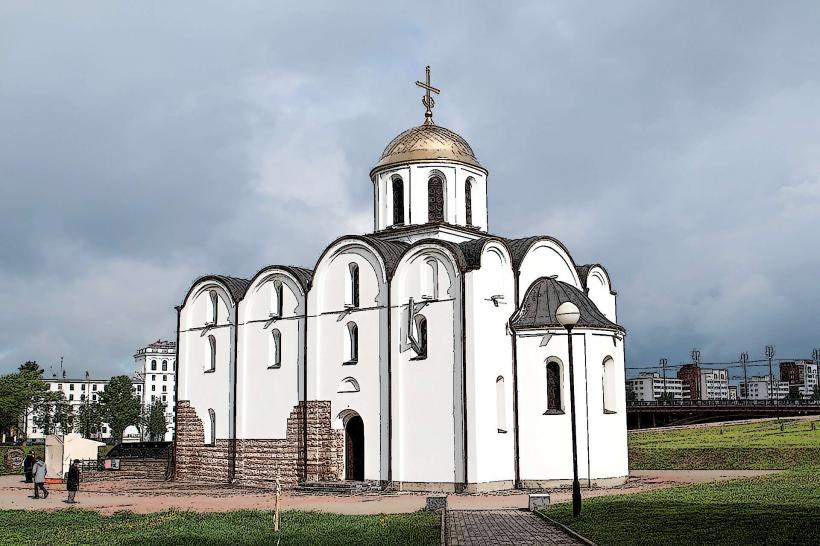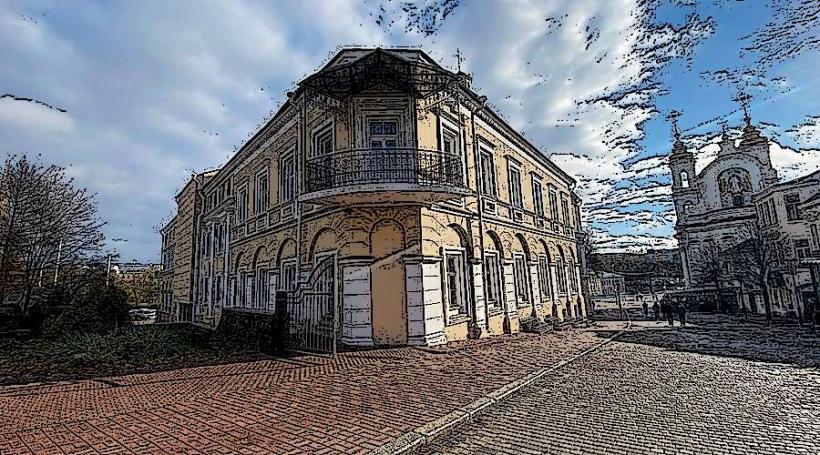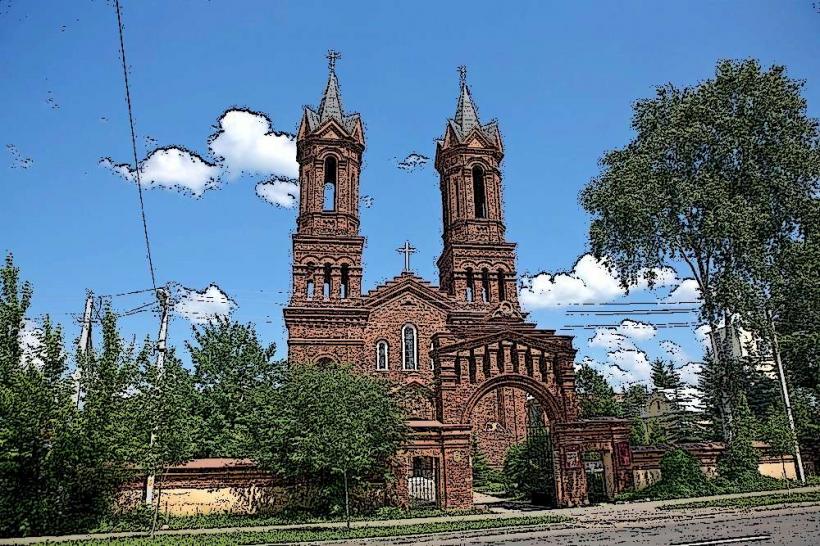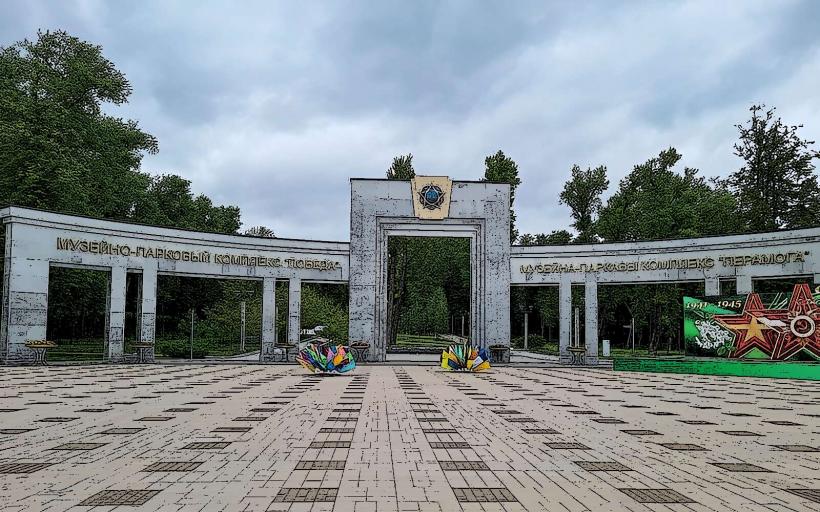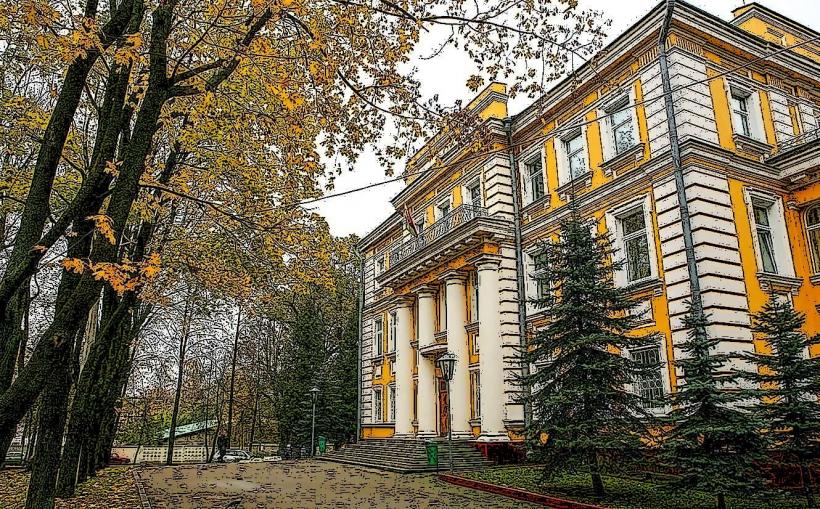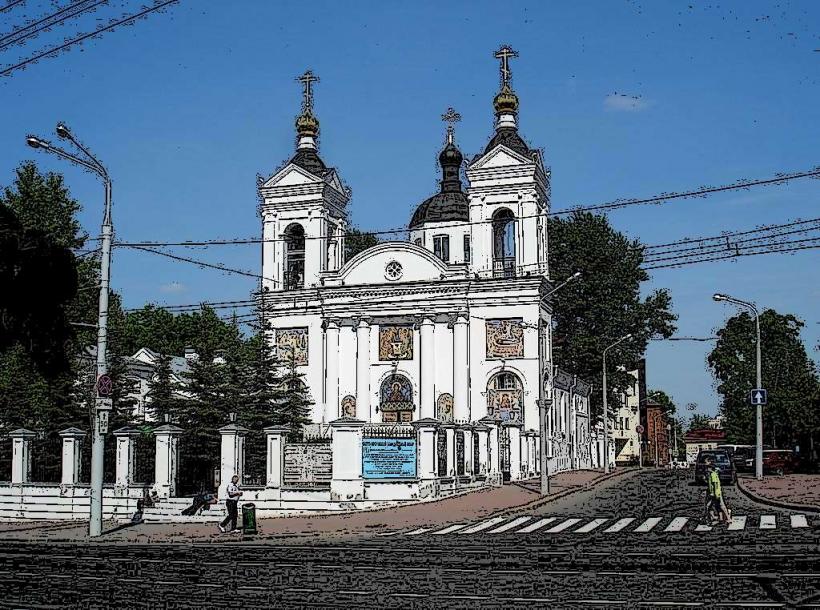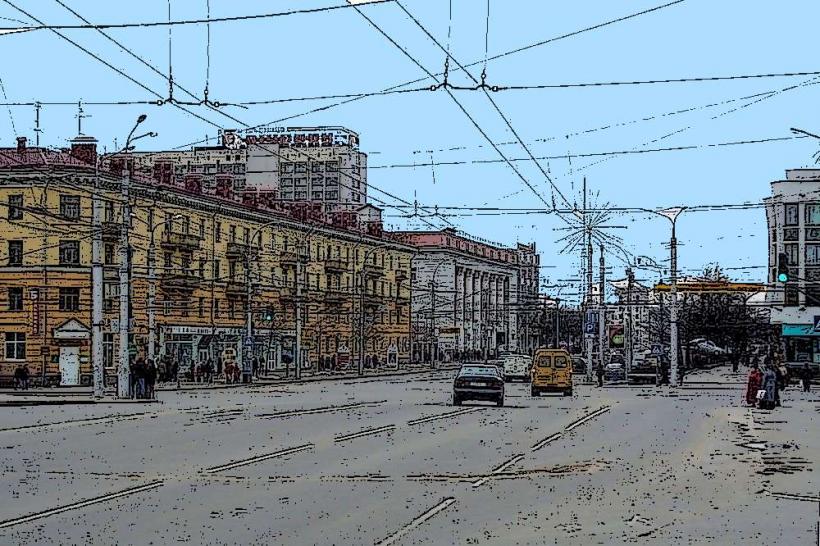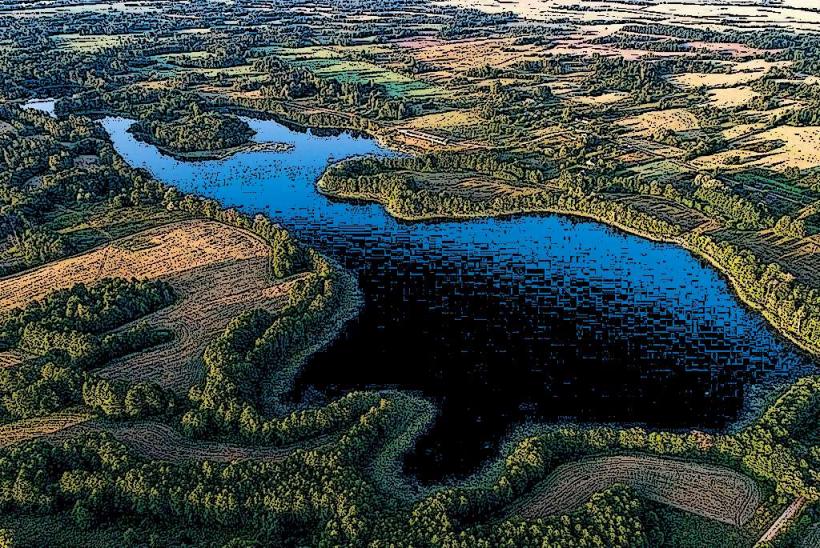Information
Landmark: Partisan Glory ParkCity: Vitebsk
Country: Belarus
Continent: Europe
Partisan Glory Park (Park of Partisan Glory) in Vitebsk, Belarus, is a significant historical and cultural site dedicated to honoring the memory of the Soviet partisans and other fighters who resisted Nazi occupation during World War II. The park serves as a reminder of the bravery, sacrifice, and resistance efforts of the local people and partisans who fought for the liberation of Belarus from German occupation.
Historical Background
Partisan Glory Park was created to commemorate the resistance movements that took place in Belarus during World War II. During the war, Belarus was a significant battleground, with extensive partisan activities taking place in the forests and rural areas. The partisans were a network of resistance fighters, many of whom were local Belarusian civilians, who engaged in guerrilla warfare against Nazi German forces. These partisans played a crucial role in sabotaging German military operations, disrupting supply lines, and providing intelligence to the Soviet Red Army.
Vitebsk, like many other Belarusian cities, was heavily affected by the war. The Nazis occupied the city from 1941 to 1944, and many local residents joined the partisan movement to fight back. The Partisan Glory Park honors the memory of these brave individuals and their contribution to the ultimate victory over Nazi Germany.
Features of Partisan Glory Park
The park is designed to be both a memorial site and a public space where visitors can reflect on the past while enjoying nature and tranquility. Some of the key features include:
Monument to Partisans:
- At the heart of the park stands a large monument dedicated to the Soviet partisans and all those who fought for the liberation of Belarus during World War II. The monument typically features a statue of a partisan holding a weapon or flag, symbolizing the courage and determination of the resistance fighters.
- The monument is an emotional focal point, often surrounded by wreaths and offerings during significant dates, such as Victory Day (May 9) and Partisan Day (September 22), when the city commemorates the sacrifices of the partisans.
Memorial Plaques and Sculptures:
- The park features several memorial plaques and sculptures that provide additional context to the history of the partisan movement. These plaques may include names of local partisans, short stories of heroic actions, and details about the larger Soviet partisan network.
- The sculptures and reliefs in the park depict various scenes from the partisan struggle, such as ambushes, sabotage operations, and rescue missions. These artworks aim to capture the heroism and hardship faced by the partisans during their fight against the occupiers.
Partisan Trenches and Underground Bunkers:
- Some sections of the park are designed to simulate the conditions that the partisans endured during their campaigns. Visitors may encounter recreated trenches or underground bunkers, offering a tangible connection to the past. These reconstructions help visitors better understand the difficult and dangerous circumstances in which the partisans operated.
Nature and Green Spaces:
- Beyond its historical significance, Partisan Glory Park is also a peaceful green space for the local community. The park offers walking paths, gardens, and areas for relaxation. Visitors can enjoy nature while reflecting on the historical importance of the site.
- The park’s design integrates nature with memorial elements, symbolizing the resilience of the partisans and their connection to the land they fought to protect.
Eternal Flame:
- As in many other memorial parks across the former Soviet Union, an eternal flame is often present in the Partisan Glory Park. This flame is a symbol of the unyielding memory of those who sacrificed their lives in the fight for freedom and justice. The eternal flame serves as a reminder of the dedication and resolve of the people who fought for the liberation of Belarus.
Commemorative Events and Traditions
- Victory Day: The park is a key location for Victory Day celebrations on May 9, marking the victory of the Soviet Union over Nazi Germany in 1945. The park hosts ceremonies, including the laying of flowers at the memorials, speeches, and moments of silence to honor the fallen.
- Partisan Day: On September 22, Belarus commemorates the day when partisan movements were officially recognized in the country. Events are often held at Partisan Glory Park, including reenactments, speeches, and exhibitions about the history of the partisan struggle.
Educational Role
In addition to its role as a memorial, Partisan Glory Park also serves as an educational resource for both local residents and visitors. It provides an opportunity to learn about the history of resistance in Belarus during World War II, particularly the role of partisans in fighting Nazi forces. Through the memorials, plaques, and exhibitions, visitors can gain a deeper understanding of the hardships faced by the local population during the occupation and the resistance efforts that played a crucial part in the liberation of Belarus.
Visiting Partisan Glory Park
The park is open to the public year-round and is an important site for both locals and tourists. Visitors can take a peaceful walk through the park, reflect on its historical significance, and pay their respects to the memory of the fallen partisans. It is also an ideal location for those interested in Belarusian history and World War II to explore and learn more about the country’s past.
- Accessibility: Partisan Glory Park is located in a central area of Vitebsk, making it easy to visit. It is accessible to pedestrians, cyclists, and those with disabilities.
- Opening Hours: The park is generally open during daylight hours, and while there may be no entry fee, visitors are encouraged to participate in memorial events or contribute to the upkeep of the park.
- Guided Tours: Some visitors may choose to take a guided tour of the park to gain a more detailed understanding of the history behind the memorials and the significance of the partisan movement in Belarus.
Conclusion
Partisan Glory Park in Vitebsk stands as a testament to the courage, sacrifice, and resilience of the Soviet partisans and the people who fought against the Nazi occupation during World War II. Through its monuments, memorials, and educational features, the park ensures that the memory of these heroes is preserved for future generations. It is not only a site of reflection and remembrance but also a beautiful and peaceful place for residents and visitors to enjoy, learn, and honor the enduring legacy of the partisans' struggle for freedom.

